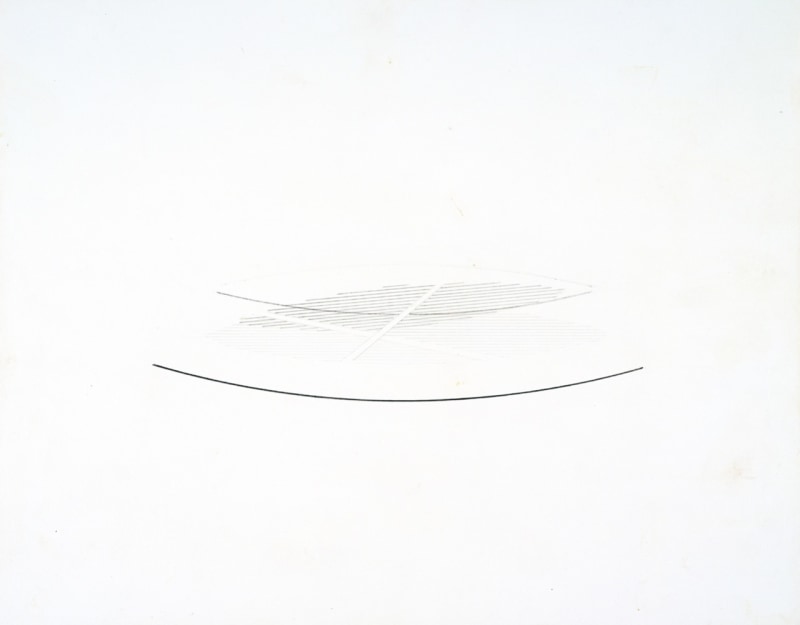
In the most intimate moment of the Drawing Center's graceful exhibition of the late East Indian artist, Nasreen Mohamedi (1937-1990), a diary page smudged with black ink, Untitled, (1978) speaks volumes about the artist's profound sensibility. Casually logging her thoughts into the diary as though dashing off a grocery list, Mohamedi writes: "Proportion... Relative Value of Proportion.... Line... Tones.. Light.... How Light Changes... Space Between Forms...." - each solitary entry aligned with a given day of the week. In a neighboring leaf of the same diary, Mohamedi glazes ink over much of its surface, as though to evoke a shadow raking over a sundial.
This exquisite awareness of time and duration, of the eye's perpetual travel while registering the commonly overlooked detail, goes to the core of Mohamedi's aesthetic. One is tempted to call her a minimalist, yet the label finally hangs like a straightjacket. Indeed, Mohamedi's is more a roaming, cursive, meandering consciousness, which lights effortlessly upon fragments in the landscape, the cityscape and Islamic architectural forms, such as the stepped cornice of an early mosque observed in extreme close up (Mohamedi traveled frequently to the Middle East to study these monuments firsthand). Spare, nearly weightless and almost entirely self-effacing, Mohamedi's aesthetic is ultimately about focusing consciousness back onto itself with the aid of an abstract foil. For instance, in a photograph of a completely darkened portal, the arched threshold could signal an exit or, conversely, a focal point for the observer's fixed perspective. Hence, the stringently pared-down tableau that emerges from each of Mohamedi's "sketches" - often concise clutches of lines paced across graph paper-like abstract scaffolding - in pencil and ink, diary paper brushed with ink, or black and white photography. Something of an architect's conceptual sensibility informs this reductive vision, where vast forms are mapped and schematized, as though with an eye to their eventual reconstitution.
Is this work the work of a mystic in the mold of Agnes Martin? Yes and no. Mohamed, born in present-day Pakistan but a longtime resident of Mumbai trained in design schools in London and Paris, fits easily into that discourse, no less for the fact that she is a follower of Zen Buddhism. For example, a photographic close-up of a weaver's loom, fully threaded and awaiting the shuttle (Untitled VII, c. 1972), rises like an arid landscape filled with possibility and languid anticipation.
Writing eloquently on Mohamedi in the Drawing Center's elegant catalog, Geeta Kapur and Susette Mintrack elucidate Mohamedi's obtuse sensibility, providing various readings of her work in accordance with recent art history, from metaphysical abstraction at the turn of the 20th century to Martin's sublime minimalism. Such readings are helpful but often veer close to eulogistic hyperbole; in fact, having died at 53 of Parkinson's disease, Mohamedi continues to evoke such reveries from her admirers too habitually. Without slighting such mystical readings, it may be time to finally appreciate Mohamedi for an equally moving, if more concrete aspect of her work: an uncompromising perceptual clarity matched with a designer's sense for reducing visual congestion to clean formal signatures.
-Gregory Galligan